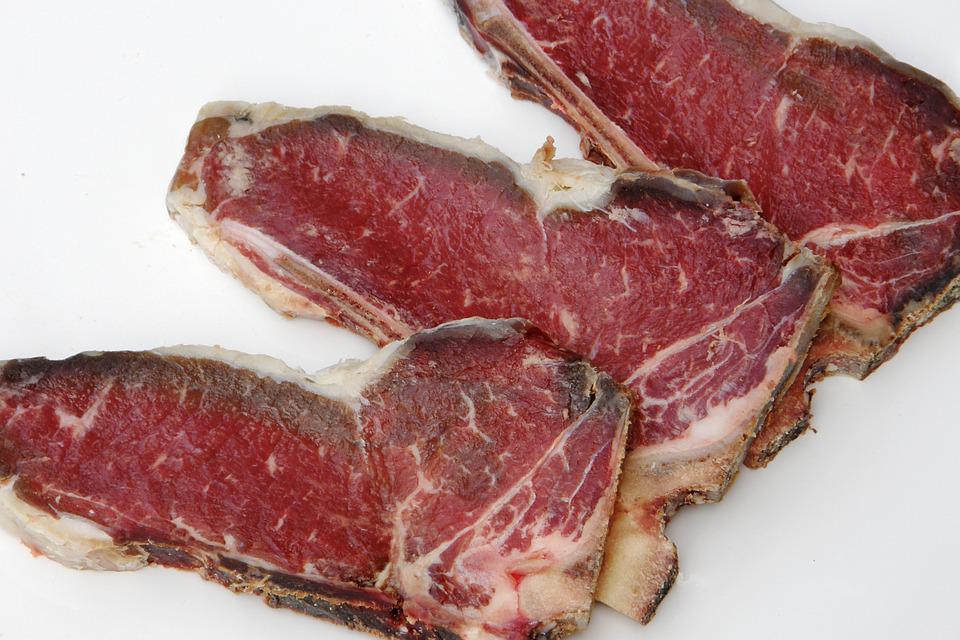When it comes to food, there’s nothing like a great steak. However, this is no ordinary steak. It’s a dry-aged steak. Dry-aging is a process that takes place after the animal has been butchered, when the meat is hung for a period of time to allow the natural enzymes in the meat to break down the proteins. This process results in a steak that is tender, juicy, and full of flavor. In this post, we’re going to show you how to dry age a steak at home—and we’ll also teach you how to dry age any other kind of meat as well.
What Is Dry Aging?
If you’re wondering how to keep your steaks from drying out, then you might be interested in learning more about dry ageing. This process involves placing meat into a climate-controlled room for several weeks. During this time, the temperature inside the fridge will drop, while the humidity increases. As a result of these changes, the meat will become drier than normal.
As you can imagine, this type of treatment makes the meat taste better. However, it also helps to preserve the texture and flavor. You should always try to buy steaks that have been aged for at least six months. If you don’t want to pay the price of a good cut of beef, then you should look for cuts that are already pre-aged.

What is Dry Aged Beef?
When you eat dry aged beef, you’ll notice that it’s much leaner than regular beef. The fat content will usually range between 1% to 2%. Because of this, you won’t need to use as much oil when you cook with it.
You can find dry aged beef in most supermarkets. However, if you live outside of the United States, you may have to search a bit harder to find some.
The Benefits of Dry Aging
There are many reasons why you should consider buying dry aged beef. First off, it tastes better than other kinds of meats. When you eat a piece of dry-aged beef, you’ll notice that the flavor is much richer. You won’t need to add any extra seasoning to the food because it’s already delicious.
Another benefit of dry aged beef is that it is healthier for you. Since this kind of meat doesn’t have any added fat, you can enjoy eating it without worrying about gaining weight. In addition, there is no risk of getting sick from bacteria. It also has a lower cholesterol level. So if you’re trying to lose weight, then you might be interested in learning about the health benefits of dry aged beef.
You’ll find that this type of meat is very tender. That means that you don’t have to worry about chewing it. It will break apart easily when you bite into it.
Why Dry Aging Is Better Than Wet Aging
One of the most important things to consider when cooking a steak is the type of meat that you use. There are two main kinds of steaks: wet aged and dry aged.
Wet-aged steaks are cooked by putting them into water. The idea behind doing this is to make sure that all of the juices are released from the meat. If you don’t do this, then the meat won’t be tender enough.
However, there is a problem with using water to prepare these steaks. When you put a piece of meat in a pot, it absorbs some of the liquid. So, when you remove the meat, the remaining fluid ends up being very salty.
This isn’t good, because you can end up adding salt to the food that you eat. And, this is something that you definitely don’t want to do. You should always try to avoid eating foods that have been processed with too much salt.
The other option for preparing steaks is to dry them. This means that they will not absorb any of their own juices. Instead, they’ll just become tough and chewy.

Tips for Dry Aging
When you’re looking to make the most of your meat, you should consider trying to dry-age it. This process involves letting a piece of beef sit without refrigeration for several days. As a result, the meat will lose moisture. If you want to learn more about this process, then keep reading.
You might be wondering why you would want to dry-age your steak. The answer is that it makes the meat tender and flavorful. When you cook the steak, you’ll notice how much better it tastes when it’s been dried out.
To get started with the drying process, you need to find a place where you can store the meat for at least two weeks. You also have to figure out a way to cover the meat so that it doesn’t get wet.
If you don’t live in an area where you can use your backyard, you could try using an airtight container. Make sure to leave enough room for the meat. After all, you don’t want to overcrowd the container. After you’ve found a spot to store the meat, you’ll need to buy some tools that will help to preserve its flavor. A good option is to invest in a meat thermometer. It will allow you to check on the temperature of the steak while it’s being stored.

